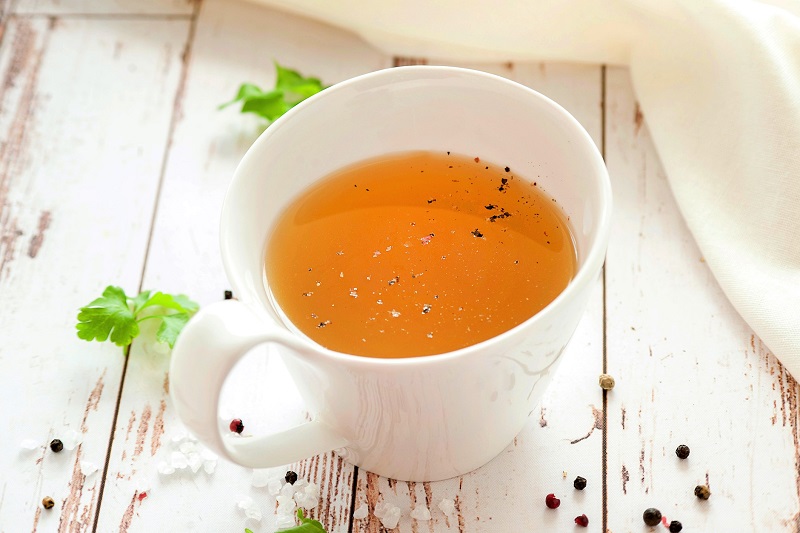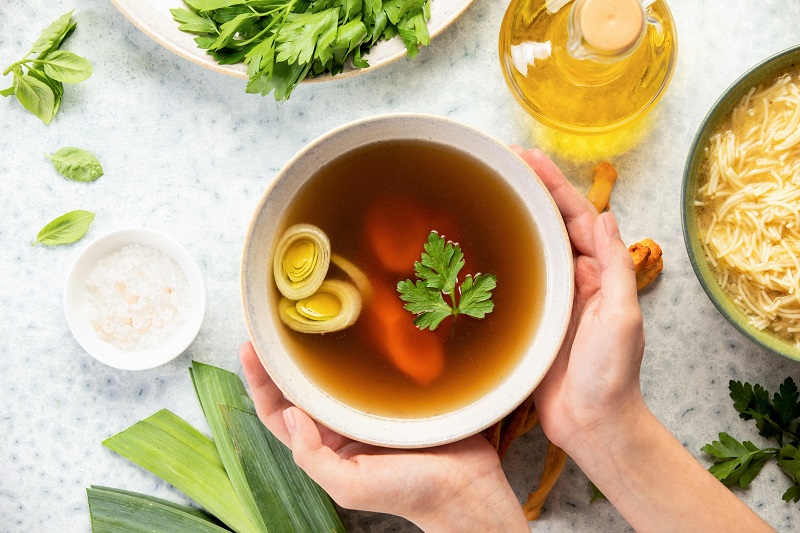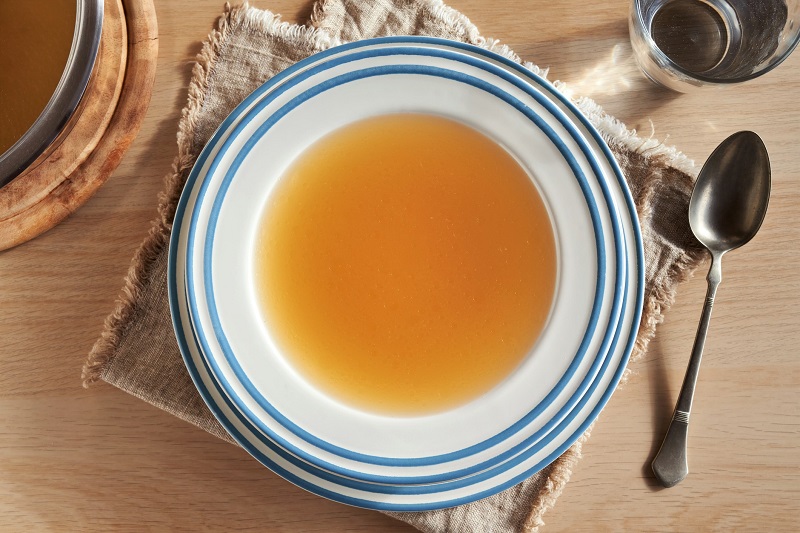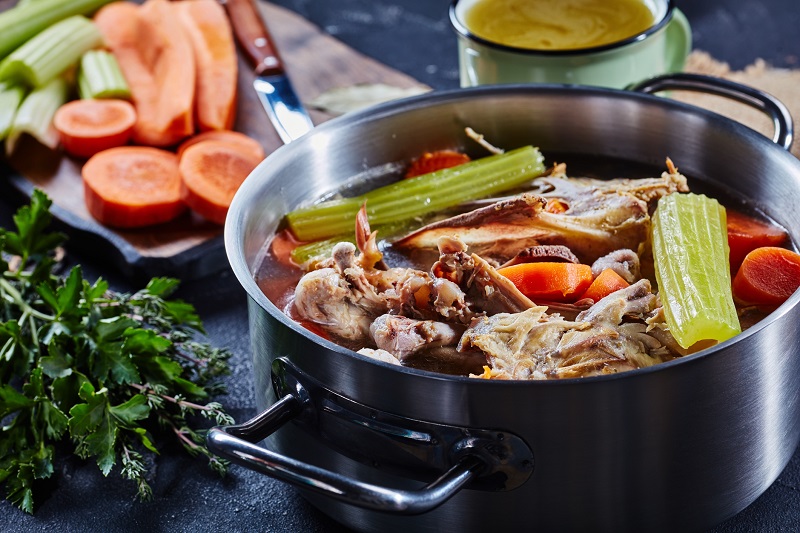Food trends come and go so quickly, it can be hard to keep up with them. Bone broth is getting a lot of attention these days, but it’s been around forever. You might be wondering what it is exactly and why it seems to be showing up in so many grocery store products, magazine articles and online posts. Here’s what you need to know about bone broth.
What is Bone Broth?

Broth, stock and bone broth are all very similar. However, according to Campbell’s, they do have some differences:
- Broth is thinner and prepared from meat, vegetables and seasonings simmered for 30 minutes or up to 2 hours. Some varieties are also made with bones or stock.
- Stock is prepared by simmering bones and vegetables for 4 to 6 hours. It generally has less seasonings.
- Bone broth is considered a type of stock. It’s also made from bones and may contain vegetables. It is simmered longer; 12 to 48 hours.
Bone broth also tends to have a thicker consistency, and it feels very rich and satisfying in your mouth.
Is Bone Broth Good for You? What are the Benefits of Bone Broth?

People have always made bone broth, especially when meat was scarce or very expensive. Healthy eaters are now seeking out bone broth because of the higher amount of protein and the collagen content.
According to the United States Department of Agriculture (USDA), chicken bone broth has about 44 calories per cup, while regular chicken broth has about 10 calories per cup. The same cup of chicken bone broth has 10 grams of protein. Regular chicken bone broth has just one gram of protein per cup.
Bone broth will vary in nutrition based on the specific ingredients used to prepare it. However, according to Medical News Today, bones and bone marrow are rich in vitamins, minerals and nutrients.
Bones contain calcium, magnesium, phosphorus and collagen, while bone marrow contains iron, vitamin A, vitamin K, selenium, zinc, manganese and fatty acids. It is possible that bone broth contains small amounts of these nutrients. Using vegetables as an ingredient in bone broth can also increase the nutritional value.
How to Use Bone Broth

You can use bone broth in just about any recipe that calls for regular broth. Stews, gravy, sauces, and other dishes that are best with a hearty foundation benefit from cooking with bone broth. Make pasta, beans, rice and other grain dishes tastier and more nutritious by cooking them in bone broth rather than in plain water.
For many people, drinking a steaming cup of bone broth has become a substitute for coffee in the morning. Others sip it when hunger strikes between meals.
Because bone broth has a healthy supply of protein, it may help to satisfy your hunger, give you energy and keep you feeling full. It’s low in calories and high in nutrients, so it’s a good choice when you’re trying to lose weight.
Where Can You Buy Bone Broth?

You’ll see bone broth next to regular broth on supermarket shelves these days. Choose low-sodium varieties whenever you have the option. You can also look for bone broth at local farmers markets and butcher shops. It will typically be fresher and less processed.
How Do You Make Bone Broth?

Making bone broth yourself is simple. You can use bones from just about any type of livestock. Along with the common choices of beef, chicken and pork, you can also start with the bones of turkey, lamb, venison and bony fish like bass.
You can also use parts that are high in marrow (which is mostly collagen) like hooves and feet, beaks and fins. Many stores throw out these parts, so you may be able to get them for a low cost or even for free. Using a mixture of these ingredients can enhance the flavor and the nutritional content of the stock.
A basic recipe for bone broth starts with one gallon of water and about two to four pounds of bones and other parts. Bump up the flavor of the stock by including vegetables such as carrots, onions and celery, plus herbs like thyme and parsley.
Put all the ingredients in a large pot or slow cooker. After the liquid comes to a boil, turn down the heat and simmer it for 12 to 24 hours. It will become more flavorful the longer you let it simmer.
As the liquid begins to cook, you may see a layer of foam on top. Skim it off as it appears about every 20 minutes for the first hour. When you’re done simmering, strain the liquid and discard the bones and other ingredients.
Whether you make or buy bone broth, it’s a healthy foundation for soup recipes like Instant Pot Chicken Tortilla Soup and Slow Cooker Zuppa Toscana Soup. These Flex meals are certain to satisfy hearty appetites and take the chill off a cool day!
The post What is Bone Broth? Health Benefits, Cooking Ideas and More appeared first on The Leaf.
Comments
Post a Comment